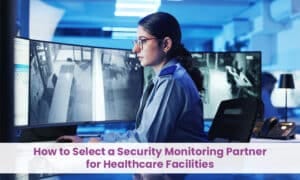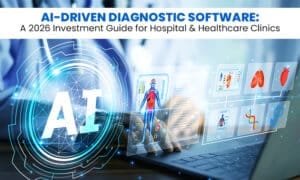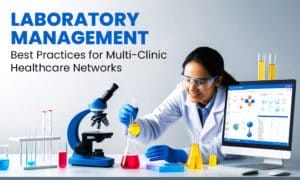
The healthcare industry is rapidly evolving, with technology reshaping patient-provider interactions. As hospitals embrace digital transformation, patient engagement has become essential for personalised, accessible, and real-time communication. Patient engagement tools, such as hospital patient engagement software and digital patient engagement solutions, play a pivotal role in improving care, boosting patient satisfaction, and streamlining operations. Hospitals are moving from paper-based workflows to smart platforms that enable proactive care and ensure compliance. This blog will explore the critical role of these tools, their benefits, how to choose the right one, and highlight top solutions for healthcare organisations today.
The Digital Shift in Healthcare: What It Means for Patient Engagement
The healthcare industry is increasingly adopting a digital-first approach to its operations. A wide range of technologies, including artificial intelligence (AI), the Internet of Things (IoT), telemedicine, and mobile-first platforms, are reshaping how healthcare providers deliver care and engage with patients. The rise of digital patient engagement solutions is enabling hospitals to move beyond traditional care models focused on reactive treatment. Instead, the focus is shifting toward a more proactive and relationship-based model of care.
The integration of digital technologies into patient care workflows allows for real-time communication, personalised care, and better decision-making. For example, telemedicine and remote patient monitoring solutions are improving access to healthcare, particularly for patients with chronic conditions or those living in rural areas. The increasing adoption of mobile health apps and patient portals also facilitates continuous engagement with patients outside of the hospital environment.
For hospitals to stay competitive and meet the expectations of today’s digitally-savvy patients, integrating patient engagement tools is no longer optional but essential. As patient expectations evolve and digital solutions become more sophisticated, hospitals that fail to embrace these technologies risk falling behind.

Why Patient Engagement Tools Matter for Hospitals
Hospitals are under increasing pressure to enhance the patient experience and ensure that patients remain engaged throughout their care journey. Patient engagement tools are designed to address these challenges and bring about significant improvements in several critical areas.
1. Strengthen Patient Loyalty and Retention
Effective engagement tools allow hospitals to build trust and foster long-term relationships with patients. When patients feel involved in their healthcare journey, they are more likely to remain loyal to the healthcare provider and continue seeking care from that institution in the future.
2. Improve HCAHPS Scores and Hospital Reputation
The Hospital Consumer Assessment of Healthcare Providers and Systems (HCAHPS) survey measures patient satisfaction across a variety of parameters, including communication with nurses and doctors, cleanliness, and overall hospital experience. Patient engagement tools, such as real-time surveys and automated communication, can improve a hospital’s HCAHPS scores, which in turn enhances its reputation.
3. Enable Cashless Payments and Real-Time Communication
Digital patient engagement solutions allow for easy and secure payment options, reducing administrative burdens and improving the financial experience for patients. Real-time communication tools ensure that patients can easily get in touch with their healthcare providers for follow-up appointments, lab results, and other enquiries, fostering a more connected and responsive care environment.
4. Support Compliance (HIPAA, NABH, GDPR)
Patient engagement tools designed for healthcare systems also provide built-in compliance features to adhere to essential regulatory standards like HIPAA, NABH, and GDPR. By ensuring that patient information is securely stored and transmitted, these tools safeguard against data breaches and maintain patient trust.
Key Benefits of Patient Engagement Technology for Healthcare Systems
Patient engagement tools offer a wide range of benefits for healthcare systems, driving operational efficiency, improving care outcomes, and enhancing patient satisfaction.
1. Operational Efficiency
One of the most significant advantages of implementing patient engagement technology is the ability to automate administrative processes. Tasks such as appointment scheduling, reminders, patient check-ins, and documentation can be streamlined, reducing the administrative burden on staff and enabling healthcare providers to focus more on direct patient care.
2. Improved Care Outcomes
Digital engagement tools enable personalised communication and patient education, both of which are vital for better health outcomes. Patients who are actively involved in their care decisions are more likely to adhere to treatment plans, make healthier lifestyle choices, and experience improved health outcomes.
3. Financial Gains
With better patient engagement comes fewer missed appointments and better billing compliance. Automated appointment reminders and easy payment solutions reduce the risk of no-shows and late payments, driving financial stability for hospitals. Additionally, some patient engagement solutions offer predictive analytics that can identify patients at risk of non-compliance, allowing healthcare providers to intervene before issues arise.
4. Patient Satisfaction
Seamless, convenient digital touchpoints improve the overall patient experience. From appointment scheduling and reminders to secure messaging and virtual consultations, patient engagement solutions simplify the process and enhance satisfaction. The convenience of these tools can also drive patient loyalty and retention.
5. Data-Driven Insights
Patient engagement platforms provide valuable data and analytics that hospitals can leverage for decision-making. From identifying trends in patient behaviour to tracking the effectiveness of engagement strategies, these insights empower healthcare providers to continuously improve patient care and operational processes.
Top 10 Patient Engagement Tools for Hospitals in 2025
As hospitals continue to embrace digital transformation, a wide range of patient engagement tools are becoming available. Here are ten of the top tools that hospitals should consider in 2025:
1. Patient Portals
These online platforms provide patients with easy access to their medical records, test results, and billing information. Patient portals improve transparency and empower patients to take control of their healthcare journey.
2. Telehealth Platforms
Telehealth tools facilitate virtual consultations, follow-up visits, and remote care, providing patients with more flexible healthcare options. They are particularly useful for outpatient care, reducing the need for in-person visits and minimising wait times.
3. Mobile Health Apps
Mobile apps enable continuous patient monitoring, medication reminders, and direct communication with healthcare providers. These apps support chronic disease management and foster long-term engagement.
4. Automated Appointment Reminders
SMS, phone calls, and app notifications help ensure that patients don’t miss their appointments. Automated reminders reduce no-show rates and help improve hospital efficiency.
5. EHR-Integrated Engagement Tools
Integration with Electronic Health Records (EHR) systems such as Epic, Cerner, and Allscripts ensures that patient data flows seamlessly between different platforms, enabling real-time updates and reducing errors.
6. Remote Monitoring Devices
IoT-enabled devices can track patients’ vital signs, activity levels, and other health metrics remotely, providing healthcare providers with continuous data and improving patient care.
7. Patient Feedback & Survey Tools
These tools allow hospitals to collect real-time feedback from patients, assess their satisfaction, and make improvements where necessary.
8. Secure Messaging Platforms
HIPAA-compliant messaging tools enable encrypted, real-time communication between patients and healthcare providers, ensuring that sensitive information remains secure.
9. Digital Education Tools
These platforms deliver personalised educational content, helping patients better understand their conditions and treatment plans, which can lead to improved health outcomes.
10. Loyalty & Retention Platforms
These platforms allow hospitals to create loyalty programs that reward patients for their continued engagement, helping to increase retention and satisfaction.
Patient Engagement Platforms for Healthcare Systems
Enterprise-level patient engagement platforms are designed to meet the needs of multi-location hospitals. These platforms offer unified dashboards that provide hospital leadership with a comprehensive overview of patient interactions, satisfaction metrics, and operational performance. The scalability of these platforms ensures they can adapt to growing hospital systems, while compliance features ensure that hospitals adhere to healthcare regulations like HIPAA and GDPR.

Patient Communication Tools for Hospitals
Communication is at the heart of patient engagement. Secure messaging and chatbots allow hospitals to provide instant, HIPAA-compliant communication channels for patients. Omni-channel communication strategies, such as app-based notifications, SMS, email, and patient portals, ensure that patients can reach their healthcare providers on their preferred platforms. Additionally, providing real-time multilingual support is crucial in diverse patient populations, improving the accessibility and inclusivity of healthcare services.
Communication Tools Comparison

How to Choose the Right Patient Engagement Software for Hospitals
When selecting patient engagement software, hospitals should consider several key factors:
- Scalability: Ensure the solution can grow with the hospital’s needs.
- Compliance: The software should meet industry standards, such as HIPAA and NABH.
- Integration: It must integrate seamlessly with existing hospital IT systems, such as EHR platforms.
- Cost vs. ROI: Evaluate the long-term financial impact of the solution, considering both upfront costs and potential savings.
- Vendor Support: Choose a vendor that offers robust support and regular updates.
Patient Engagement Solutions for Reducing No-Shows and Improving Retention
No-shows are a major concern for healthcare systems, leading to lost revenue and inefficiencies. Automated appointment reminders, two-way scheduling tools, and predictive analytics can significantly reduce no-show rates. Additionally, loyalty-building strategies, such as rewards for engagement, can help improve patient retention.
Remote Patient Engagement Tools for Hospital Outpatients
Teleconsultations and remote monitoring devices are key components of a modern, patient-centric hospital. These tools enable hospitals to provide high-quality care to patients beyond the hospital walls, improving access and reducing re-admissions.
Automated Appointment Reminders for Clinics and Hospitals
Automated appointment reminders are vital for modern patient engagement. Using tools like SMS, IVR (Interactive Voice Response), email, and app-based reminders, clinics and hospitals can reduce missed appointments and boost efficiency. These systems help patients remember appointments, lowering admin workload and enhancing the patient experience.
• SMS, IVR, Email, and App-Based Reminders
Each reminder type caters to different patient needs. SMS reminders are concise and ideal for last-minute notifications, sent a day or hours before appointments. IVR uses pre-recorded calls, suitable for those preferring phone contact.
Email reminders provide detailed information and rescheduling links for tech-savvy patients. App-based reminders, integrated into hospital apps or portals, offer a seamless experience—allowing patients to confirm, reschedule, or cancel appointments while syncing with their medical records for timely and personalised alerts.
• Reduced No-Show Rates and Improved Efficiency
Automated reminders significantly lower no-show rates by engaging patients via preferred channels. Patient engagement software manages reminder tracking and responses, ensuring timely communication. Hospitals adopting these systems report better scheduling and reduced costs. One healthcare system saw a 25% drop in no-shows after using SMS and email reminders—boosting efficiency and patient satisfaction through convenient, targeted messaging.
Patient Feedback and Survey Tools for Healthcare Systems
Patient feedback is vital for improving hospital services. Using patient engagement tools like online surveys, kiosks, and in-app feedback, hospitals can collect real-time patient experience data to assess satisfaction, track performance, and drive improvements.
• Importance of Real-Time Patient Experience Tracking
Digital patient engagement solutions enable real-time feedback during visits or post-care, helping providers address concerns promptly and enhance services. Feedback at discharge or via automated surveys reveals insights into wait times, care quality, and staff interactions—helping hospitals act while experiences are fresh.
• Online Surveys, Kiosks, and In-App Feedback
Hospitals gather feedback through digital platforms like emails, portals, or SMS. Kiosks in waiting areas offer quick, interactive options, while in-app feedback through hospital apps allows seamless patient input.
• Analytics → Actionable Improvements
Hospital patient engagement software analyses feedback, identifies trends, and supports data-driven improvements. For example, addressing wait time complaints or recognising praised providers enhances both operations and staff morale.
Building Future-Ready Hospitals with Patient Engagement Tools
The digital shift in healthcare makes patient engagement tools essential for improving communication, satisfaction, and outcomes. These tools help hospitals build stronger provider-patient relationships, reduce costs, and boost operational efficiency. To stay competitive, hospitals must adopt hospital patient engagement software that aligns with their needs and long-term goals.
Digital patient engagement solutions are key to creating a more efficient, connected, and patient-centric healthcare ecosystem. By leveraging these tools, hospitals can deliver better care and become future-ready. The future of healthcare is digital, and the time to act is now.





